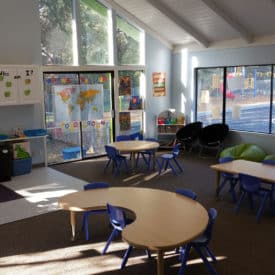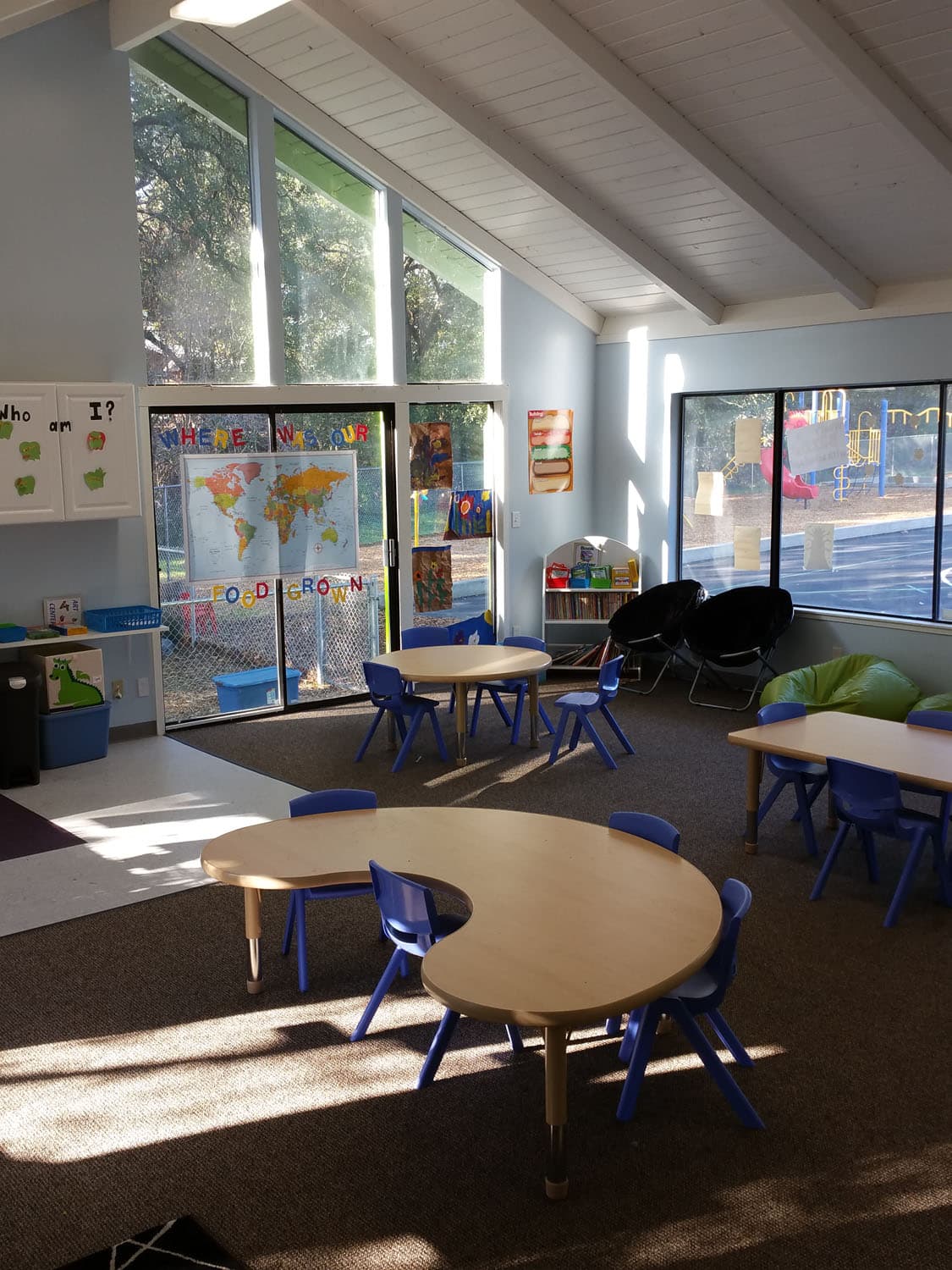
What Is Transitional Kindergarten and Why Is It Great?
The Benefits Of Transitional Kindergarten

The September first birthday cutoff is always sure to raise conversation within upcoming kindergarten classes. Many parents have already had their children in preschool for two years, just to have their little one miss the cutoff for kindergarten by a few days. These parents then need to choose between enrolling their child in another year of preschool, in a private school with flexibility on age eligibility, or in a Transitional Kindergarten program.
Transitional Kindergarten is the optional first year of a two-year Kindergarten program. It was created in 2010 with the passing of the California Kindergarten Readiness Act, which created a new cutoff of September 1st birthdays for Kindergarten eligibility. It is available for four-year old’s who will turn five between September 2nd and December 2nd.
What Are The Benefits Of Transitional Kindergarten?
Though Transitional Kindergarten is optional, it does provide both children and families with multiple benefits. The first of these benefits is simply the gift of time. Transitional Kindergarten also has the benefit of introducing the typical school setting at an earlier age. It is offered in various locations and settings, so it is a convenient childcare option and high-quality educational opportunity for many families.
The Gift Of Time In TK
Children who participate in Transitional Kindergarten (TK) simply have more time to learn and grow in a school setting than those who go straight into the typical Kindergarten classroom. This time allows the children to grow the social and emotional skills that are so necessary in the classroom. Children who participate in TK further develop both their confidence and their self-control than they could have if they went straight to Kindergarten.
When children go into Kindergarten confident, they are in turn ready to learn. They are far more likely to engage in class lessons and activities, and they will have an easier time making friends. The added self-control allows these students to have an easier time with daily Kindergarten tasks, such as following rules, controlling impulses, walking in the classroom, using inside voices, and sitting still for story time.
This added chance to grow and develop socially and emotionally is extremely important. When you think of Kindergarten, you probably imagine the beginning of academic learning and an increased focused on subjects like math and literacy. However, students who do not have adequate social and emotional skills will not be able to learn as well as students who are proficient in these areas. If Kindergarten students are focused on how to communicate properly with their classmates or how to behave as part of a group, they will have less mental energy to spend on their academic learning. In order to grow academically, they must be socially and emotionally ready.
Transitional Kindergarten students have more time to learn academic prerequisites than average Kindergarten students as well. A study done in California school systems by the American Institutes for Research found that TK students performed six months ahead of their peers in reading and literacy, and three months ahead of their peers in math and problem-solving at the beginning of the school year. Bringing in this type of knowledge again adds to confidence, and helps students excel throughout their Kindergarten year.
Transitional Kindergarten students also simply have more time to learn the necessary Kindergarten curriculum. For example, if students go into Kindergarten without knowing the majority of their letter sounds, they will need to spend a large part of the year catching up to their peers. They have extra time to learn introductory math and science lessons as well. With TK, students have the entire first year of their two-year Kindergarten program to gain their prerequisite skills.
Even if we set academic lessons and social-emotional growth aside, Transitional Kindergarten’s gift of time continues to have benefits. In TK, students do not only focus on Common Core. They still have time to learn through play, something that is developmentally appropriate and extremely necessary for this specific age group. They are given opportunities to learn through dramatic play as they did in Preschool, and through group lessons that they will often participate in when they reach their second year of Kindergarten. TK has found the “sweet spot” for 4-5-year old’s to balance academic learning and play-based activities.
Early Introduction To The School Setting
Transitional Kindergarten programs in private schools and childcare centers offer many benefits. The teachers are highly qualified, and the classrooms are set up to provide children with an easy transition between Preschool and Kindergarten.
Many children benefit greatly from this early introduction into the school setting because they are older than their four-year-old preschool peers, and have often already experienced one or two years of preschool. They may have already mastered many Kindergarten prerequisites that are taught in many preschool classrooms. This makes the children ready for the added challenge that comes with TK and the common core curriculum, even if they are not quite ready for traditional Kindergarten.
The curriculum for TK is a perfect balance between “real school” and “preschool.” It is developmentally appropriate for the specific age group. It is basically a Kindergarten curriculum, but it is modified to fit the slightly younger student. It includes pieces of both the California Department of Education’s Preschool Learning Foundations and the Common Core standards that they will continue to follow through grade school.
Convenient, High-Quality Education in Transitional Kindergarten
Much convenience is provided when Transitional Kindergarten is attended in a private school or childcare center. This allows for families to stay in a childcare center an extra year if they have found a place that they are their child loves and allows for added convenience if younger siblings still attend the childcare center as well.
Because Transitional Kindergarten is offered in a variety of settings, it can be made convenient for any family. It can be adjusted, and the best fit can be chosen for the TK child and their family’s specific schedule and lifestyle.
This convenient education is always the same quality. It is based on state standards, so TK students are getting the best education for their age group’s needs no matter where their families chose to have them attend.
Overall, Transitional Kindergarten is a program that has benefited countless children since its start. TK provides children with the gift of time, an early introduction to the typical school setting, and the opportunity to receive convenient high-quality education. It provides excellent growth opportunities in an environment that is the perfect balance of fun and education for the children who just missed the age cutoff for Kindergarten.
Growing Brilliant offers a high-quality TK program. Learn more here.

